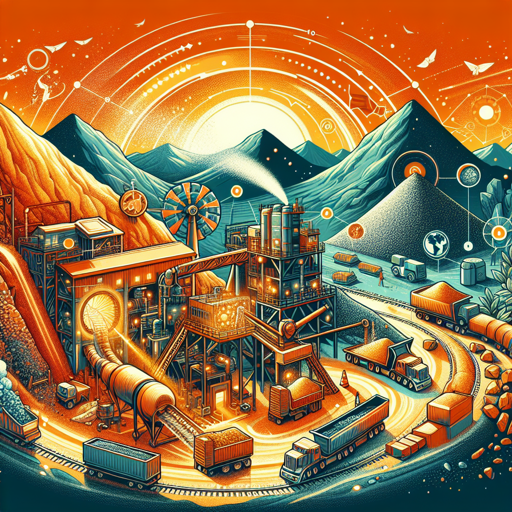Unveiling the Intricacies of Bauxite Mining
An in-depth exploration of the processes involved in mining and refining bauxite, a key mineral in aluminum production.

Introduction
Behind every aluminum product in our daily lives, from soda cans to aircraft, lies a complex mineral extraction process. It all begins with bauxite mining. Bauxite, an ore rich in aluminum hydroxide minerals, is the primary source of aluminum. This article delves into the intriguing world of bauxite mining and refining, revealing the processes that bring this vital mineral from the earth’s crust to our everyday lives.
Bauxite Mining and Extraction
Bauxite mining begins with the process of locating bauxite deposits. Geologists use advanced technology to identify these deposits, which are typically found near the earth’s surface. Once a viable bauxite deposit is identified, the extraction process begins. Bauxite is generally extracted by open cast mining or strip mining, which involves the removal of topsoil and vegetation.
The extracted bauxite is then transported to a crusher, where it is broken down into smaller pieces to improve efficiency in the next stage: washing and screening. This process removes impurities, such as clay, and separates out the larger bauxite particles.
Refining Bauxite into Alumina
The refined bauxite is then processed into alumina, or aluminum oxide, a white powder from which aluminum can be extracted. This transformation occurs in a series of steps. The bauxite is first mixed with caustic soda and heated under pressure in a method known as the Bayer process. This results in a solution of sodium aluminate, leaving behind impurities, known as “red mud,” which are filtered out.
The sodium aluminate solution is then cooled, and aluminum hydroxide crystals precipitate out. These crystals are washed, heated to over 1000°C to produce alumina.
| Stage | Process |
|---|---|
| Mining | Locating deposits, extraction, crushing |
| Washing & Screening | Removing impurities, particle separation |
| Refining | Bayer process, cooling, precipitation, heating |
“To make a single pound of aluminum, approximately four pounds of bauxite must be processed.” - Anonymous
Environmental Considerations
Bauxite mining, like all mining activities, can have environmental impacts. These include loss of biodiversity, erosion, and contamination of water sources. As such, it is crucial that mining operations are conducted responsibly, with comprehensive plans for land rehabilitation and water treatment.
For more details on the environmental impact of bauxite mining, visit the International Aluminium Institute’s website.
Conclusion
The journey from bauxite mining to aluminum production is a complex one, involving a range of processes and considerable environmental considerations. As we continue to rely on aluminum in our daily lives, understanding the intricacies of its production process is paramount. Whether you’re a geology enthusiast, an educator, or just a curious reader, we hope this exploration has enlightened you about the fascinating world of bauxite mining and refining.